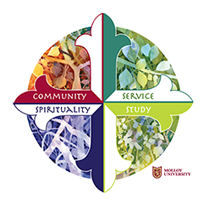Date of Award
11-2023
Document Type
Dissertation
Selected Creative Commons License

This work is licensed under a Creative Commons Attribution-NonCommercial-Share Alike 4.0 International License.
Degree Name
Doctor of Education (Ed.D.) in Educational Leadership for Diverse Learning Communities
Department
Education
School
School of Education and Human Services
Abstract
With the roll-out of the Culturally Responsive-Sustaining Education framework (2018) for New York State schools, teachers have been given guidelines for creating a welcoming and affirming classroom environment. Therefore, it is critical to focus on how teachers envision and redesign culturally responsive physical classroom spaces. This grounded theory in a bounded case study used culturally responsive pedagogy and teacher positionality to construct a theory about how teachers engage in the redesigning of classrooms. This research collected data from three elementary school teachers who participated in their district’s classroom redesign initiative and self-identified as having culturally responsive goals for their design. The research used semi-structured interviews, walking interviews, and participatory photography to collect data on each teacher’s teaching philosophy and worldview, their participation in the redesign process, and their vision for their redesigned learning spaces. Narratives tell the story of each teacher’s redesign experience and include a description of physical elements in each space that the teacher chose to highlight during the walking interview and in their Padlet reflection. Through an integration of grounded theory and symbolic interactionism, themes of self-choice, comfort, and movement emerged from the teachers’ redesign goals. The grounded theory also provides suggestions for culturally responsive design principles to support teachers and administrators in their redesign efforts that align with the Culturally Responsive-Sustaining Education framework. The implications of this study highlight the importance of the teacher’s participation in their classroom redesign. The individual (both teacher and student) and the space must align for true place-making to occur. This study adds to the body of existing literature regarding culturally responsive education practices and the impact of the physical environment on student learning.
Related Pillar(s)
Study
Recommended Citation
Bascelli, Emily Rose, "Redesigning a Culturally Responsive Elementary Classroom" (2023). Theses & Dissertations. 202.
https://digitalcommons.molloy.edu/etd/202



